Pod or Kernel, Fresh or Frozen?
Time of Harvest
Towards the end, the plants grow rapidly. With a good water supply they become visibly thicker; every additional day brings an increased yield and pod size. It’s tempting to wait, but be careful: Edamame have a short harvest window! Maturation begins at about 80% grain filling. The color fades within a few days, and the sweetness turns into a starchy flavor more reminiscent of potatoes than summer freshness.
In our experience, the frequently mentioned yellow color of the first leaves is a somewhat uncertain indicator for the optimal start of a harvest. In very dense stands or during drought, yellow leaves appear much earlier than in thinner stands in moist soil. The time of harvest cannot be determined from a distance: Keep a keen eye on your edamame in your first year, but once you have a few harvests and cooking tests under your belt, you will quickly be able to identify a perfectly ripened pod.
Kernel, Pod or Bundel?
In the frozen assortment you usually have the choice between pods for snacking and cored edamame for cooking. Coring requires special technology and is therefore usually reserved for larger producers. Fresh edamame are always offered in the pods for shelf-life reasons alone.
"Edamame" means "bean on the stalk" in Japanese. Traditionally only the leaves are removed and the whole plants, including the roots, are carried to the market in bundles. In this way, the rich pods stay fresh for a long time, even without a refrigerator. However, removing the leaves makes harvesting the bundles more laborious than just picking the pods.
Harvesting Technology
Picking edamame is laborious. The hourly yield is lower than with garden beans because the pods are not as bundled together. However, the work can easily be mechanized by using garden bean harvesters. Edamame plants have a different structure than garden beans, but no major modifications to the harvester are necessary. Edamame is successfully harvested with a variety of harvesters – from the trailed single heron to the full harvester for the rapid harvesting of large areas with edamame intended for industrial freezing.
Frozen pods are often completely free of hair. This is achieved in a separate step during washing and blanching with an extra drum.
For harvesting the edamame without pods, green pea harvesters are used. However, uncooked edamame sit much more firmly in their pods than peas. It takes quite a bit of know-how to achieve good results when coring in the field.
Sale
If you’re producing edamame plants for the freezing industry, the sales and price are usually clarified before cultivation. The harvest is taken from the field and delivered to the freezing location in one fell swoop. Frozen edamame from China and Taiwan have been available in all kinds of grocery stores for years, while domestic (organic) frozen goods are on the way and will have great potential.
Brand new territory in most regions is the sale of fresh edamame: How much will sell at the weekly market, and how much via wholesale? How can you make people more aware of edamame and what is the right price to start selling them? Those who already know edamame from their travels or from the Japanese are often excited to discover the fresh legumes at their local grocer. Many people, however, have never heard of edamame and therefore need its value and, of course, how to prepare the bean to be explained.
More edamame photos
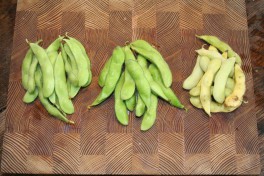

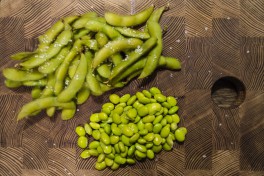
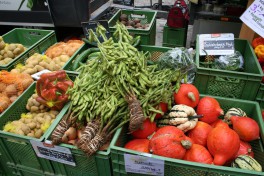

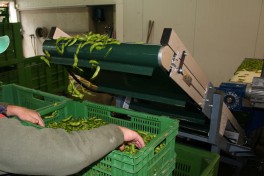
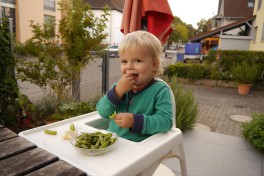
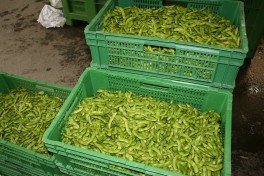
Gartensoja | Fabian von Beesten | Körtlinghausen 8 | D-59602 Rüthen
